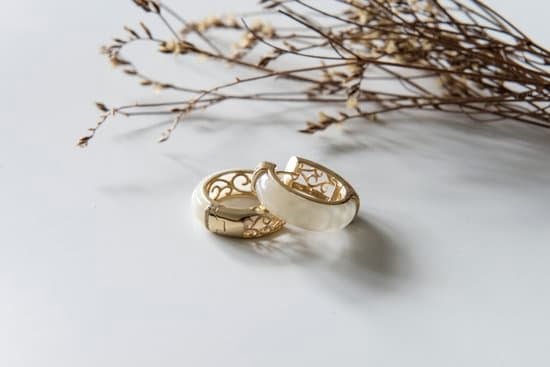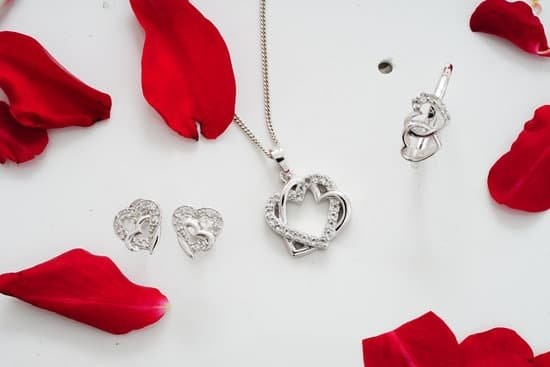Silver jewelry has long been cherished for its stunning luster and timeless elegance. Whether worn on special occasions or as an everyday accessory, silver pieces possess a luminous quality that can elevate any outfit. However, as many silver enthusiasts know, maintaining that pristine shine can be challenging due to the ever-present threat of tarnish. Understanding how to care for silver jewelry to prevent tarnish is essential for keeping your beautiful pieces looking their best.
The phenomenon of tarnishing is a common issue that affects all sterling silver items over time. This problem arises from a chemical reaction between the silver and sulfur compounds found in the air and various other environmental factors.
The resulting blackened or dulled surface can detract from the intrinsic beauty of the metal, leaving wearers disheartened by their jewelry’s lackluster appearance. This makes it crucial to have proper care routines in place if you want to keep your beloved jewelry pieces shining brightly.
Investing time in learning effective methods for cleaning, storing, and handling your silver jewelry ensures that these precious items remain captivating through the years. By adopting diligent care practices, not only do you prevent tarnish but also prolong the life and enhance the value of your collection.
From understanding what causes tarnish to implementing daily habits and storage solutions designed to combat it, this article will guide you through every aspect necessary to maintain the cherished gleam of your silver treasures.
Understanding Silver Tarnish
To better understand why this happens, it’s essential to delve deeper into the science behind it. Silver, although less reactive than many other metals, readily reacts with sulfur-containing substances like hydrogen sulfide (H2S). These can be found in things like polluted air, certain foods, or even some household items.
When silver jewelry comes into contact with these substances, a thin layer of tarnish forms over time. The extent and speed at which tarnishing occurs depend significantly on exposure levels and the specific conditions it endures.
The effects of tarnish go beyond mere aesthetics; if left unaddressed for an extended period, it can lead to deeper, more stubborn layers that are harder to remove. These heavy layers can interfere with intricate designs and detailing on silver pieces, diminishing their overall value.
Thus, knowing how to care for silver jewelry to prevent tarnish is not just about maintaining their visual appeal but also preserving their structural integrity and heritage value. Here are some effects of prolonged tarnishing:
- Loss of shine and luster
- Diminished aesthetic value
- Potential damage to delicate designs
- Increased difficulty in cleaning over time
Understanding these causes and effects highlights the critical importance of consistent care routines for your precious silver items. Employing both preventative measures and regular cleanings ensures not only their beauty but also longevity in your personal collection.
Regular Cleaning
The Importance of Regular Cleaning Routines
Regular cleaning is essential for maintaining the brilliance and shine of your silver jewelry. Over time, exposure to air and moisture can cause silver to tarnish, forming a dull and darkened layer on its surface.
By incorporating a consistent cleaning routine, you can significantly slow down this process and preserve the elegance of your pieces. Establishing a habit of cleaning your jewelry after every wear or at least once a week can keep tarnish at bay, ensuring that your silver remains radiant.
Step-by-Step Guide for Cleaning Silver Jewelry at Home
Cleaning silver jewelry at home doesn’t require complicated tools or expensive products. Begin by gathering simple household items: mild dish soap, warm water, a soft-bristle toothbrush, and a lint-free cloth. Mix a few drops of dish soap in warm water to create a gentle cleaning solution. Soak your silver jewelry in this solution for 5-10 minutes to loosen any accumulated dirt or oils.
Next, use the toothbrush to gently scrub all crevices of the piece. Rinse thoroughly under cold running water and pat dry with the lint-free cloth. To finish, polish your silver with a special jewelry polishing cloth designed to remove tarnish without harming the metal.
Effective Cleaning Solutions and Materials to Use
Choosing the right materials is crucial when cleaning your silver jewelry to prevent further damage or scratching. When considering how to care for silver jewelry to prevent tarnish, household items like baking soda and aluminum foil are often recommended due to their effectiveness in reducing tarnishing through chemical reactions.
To use these materials safely, line a bowl with aluminum foil shiny side up, add hot water until half full, then mix in two tablespoons of baking soda and one tablespoon of salt; immerse your silver pieces for five minutes before rinsing them clean and drying thoroughly with a soft towel. Always avoid abrasive materials like paper towels or tissues as they can scratch the surface and diminish your jewelry’s luster over time.
Incorporating these steps into your regular care routine will help ensure that your cherished silver pieces remain beautiful for years to come.
Proper Storage Solutions
The Importance of Controlled Environments
Storing your silver jewelry correctly is critical in preventing tarnish. One of the most effective ways to keep tarnish at bay is by ensuring that your jewelry is kept in a controlled environment. Humidity and exposure to air can accelerate the tarnishing process, so it’s vital to opt for storage solutions that minimize these elements. Airtight bags or containers are excellent options as they limit exposure to air and moisture, creating an optimal environment for your silver pieces.
Utilizing Anti-Tarnish Cloths
Anti-tarnish cloths or pouches are specifically designed to protect silver jewelry from oxidation. These materials are embedded with chemical compounds that absorb sulfur and other contaminants, preventing them from reacting with the silver. By wrapping each piece individually in anti-tarnish cloth before storing it in a box or drawer, you add an extra layer of protection against environmental factors that cause tarnishing.
Choosing the Right Jewelry Boxes
Investing in a high-quality jewelry box can also play a significant role in preserving your silver’s luster. Specialized jewelry boxes designed with anti-tarnish linings provide an added defense against tarnish-inducing agents. Additionally, these boxes often come with designated compartments and soft fabric interiors, which prevent scratching and tangling-issues that can further compromise the appearance of your jewelry.
Understanding how to care for silver jewelry to prevent tarnish involves not just regular cleaning but also smart storage choices. Proper storage solutions can significantly extend the lifespan of your precious items, ensuring they remain as dazzling as the day you acquired them.
Everyday Tips to Minimize Tarnish
Incorporating a few simple habits into your daily routine can significantly reduce the tarnish on your silver jewelry, helping to maintain its radiant shine. First and foremost, be mindful of when you wear your silver pieces.
It’s advisable to put on your silver jewelry after you’ve applied perfume, lotions, or any other body products as these substances can accelerate tarnish formation. Similarly, remove your jewelry before engaging in activities that may expose it to harsh chemicals or excessive sweating, such as swimming in chlorinated pools or exercising.
Taking care to store your silver jewelry properly at the end of each day is another effective way to prevent tarnish. Store each piece in an airtight bag or container once you’ve wiped it down with a soft cloth to remove any oils or residues from the day. This will greatly minimize exposure to air and moisture, both primary culprits of tarnishing.
Anti-tarnish strips or pads can also be included in storage containers for added protection. Keeping these best practices can teach you quickly how to care for silver jewelry to prevent tarnish buildup effectively.
Additionally, consider adopting a habit of giving your frequently worn items a quick but gentle polish using a designated silver polishing cloth every few weeks. This helps keep minor tarnish at bay before it becomes more pronounced and difficult to remove.
Also, avoid wearing your silver jewelry during activities that involve direct contact with cleaning agents or household chemicals; whether you’re washing dishes or applying hand sanitizer frequently throughout the day. Implementing these simple yet impactful tips into your daily life ensures that your treasured silver pieces remain stunning and free from unsightly tarnish for years to come.
You should also be cautious with specific foods known for their chemical properties capable of affecting metals; for instance:
- Avoid handling citrus fruits directly while wearing silver rings.
- Keep rubber bands away from direct contact with any pieces.
- Be wary of shellfish residue which could hasten corrosion.
By incorporating these small but essential steps into how you care for your beloved accessories every day, you’ll find keeping them shining brightly requires minimal effort yet yields maximum sparkle.
Homemade Remedies vs Commercial Products
Homemade remedies and commercial products both offer viable solutions for maintaining the luster of your silver jewelry. When it comes to learning how to care for silver jewelry to prevent tarnish, understanding the benefits and limitations of each method can help you decide the best approach for your needs.
Firstly, homemade remedies are a popular choice due to their cost-effectiveness and ease of accessibility. One common solution involves a paste made from baking soda and water. To prepare, simply mix three parts baking soda with one part water until it forms a thick paste.
Apply this paste using a soft cloth or sponge, gently rubbing it onto the tarnished areas of your silver jewelry. Rinse thoroughly with warm water and dry carefully with a soft cloth to reveal a renewed shine. Other household items like white vinegar and aluminum foil can also be used in combination with boiling water to clean silver effectively.
In contrast, commercial cleaning products are specifically formulated for cleaning silver jewelry efficiently and safely. These products often contain anti-tarnish agents that not only remove current tarnish but also protect against future buildup.
Popular choices include dip cleaners, polishing cloths infused with special chemicals, and spray solutions designed for precious metals. While these commercial products can be slightly more expensive than homemade remedies, they often provide quicker results and may come with instructions tailored for different types of silver alloys.
| Method | Pros | Cons |
|---|---|---|
| Homemade Remedies | Cost-effective; Accessible ingredients; Customizable mixtures. | May be less effective on heavy tarnish; Requires more effort. |
| Commercial Products | Quick results; Long-lasting protection; Easy application. | Higher cost; Potential chemical exposure. |
Ultimately, choosing between homemade remedies and commercial products will depend on factors such as budget, convenience, and personal preference. By staying informed about how to care for silver jewelry to prevent tarnish using both methods, you can tailor your approach based on the specific condition of your pieces and enjoy their sparkling elegance for years to come.
Professional Care
To maintain the luster and integrity of your treasured silver jewelry, understanding when to seek professional assistance is vital. While regular home maintenance is effective for general upkeep, certain situations necessitate expert care. One clear indicator that your jewelry may need professional cleaning or repair is persistent tarnish that does not respond to regular cleaning methods. Additionally, pieces with intricate designs or those set with precious stones might require specialized attention to avoid damage during the cleaning process.
Professional jewelers have access to advanced tools and methodologies that are not typically available for at-home use. They can perform ultrasonic cleanings, steam cleanings, and apply protective coatings that help in slowing down tarnish formation. These professionals are also skilled in addressing structural concerns such as loose settings, broken clasps, or bent metals, thus ensuring your jewelry remains both beautiful and secure for daily wear.
Another key benefit of professional care lies in their ability to offer tailored advice on how to care for silver jewelry to prevent tarnish based on the specific characteristics of your pieces. For example, they can guide whether an item should be stored in anti-tarnish bags or if it requires more frequent cleaning due to its exposure to environmental factors like humidity or pollution.
To optimize the long-term preservation of valuable pieces such as heirlooms or vintage items, periodic check-ups with a jeweler are essential.
| Signs for Professional Care | Benefits |
|---|---|
| Persistent Tarnish | Advanced Cleaning Techniques |
| Intricate Designs | Expert Structural Repairs |
| Loose Settings / Bent Metals | Tailored Tarnish Prevention Advice |
Myths and Misconceptions
In the realm of silver jewelry care, numerous myths and misconceptions persist, often leading to ineffective or even damaging cleaning practices. One common misconception is that silver jewelry should be polished frequently. While regular maintenance is essential for preventing tarnish, over-polishing can actually wear down the silver over time, reducing its longevity. Instead of frequent rigorous polishing, consider gentler methods such as using a soft cloth for light cleaning and reserving polishing for when the tarnish becomes noticeable.
Another prevalent myth is that toothpaste is an effective cleaner for silver jewelry. Despite being a popular home remedy, toothpaste can contain abrasive ingredients that may scratch and damage the surface of your silver pieces. Using non-abrasive materials specifically designed for cleaning silver is crucial in learning how to care for silver jewelry to prevent tarnish effectively. Commercially available silver cleaners or mild homemade solutions are safer alternatives.
People also often believe that storing silver in wooden jewelry boxes suffices to keep it tarnish-free. Unfortunately, wood can emit acids that accelerate tarnishing rather than prevent it. Instead, opt for storage solutions like anti-tarnish cloths or airtight bags specifically designed to protect against environmental factors contributing to tarnish. Additionally, avoid storing multiple pieces together to prevent scratches and reduce exposure to elements that could promote tarnishing.
Understanding these myths and replacing them with best practices will result in better-maintained and longer-lasting silver jewelry.
The Environmental Factor
Environmental factors play a significant role in the rate at which silver jewelry tarnishes. Geographic location, climate conditions, and air quality all have a direct impact on how quickly tarnish forms. High humidity levels accelerate the formation of tarnish because moisture promotes the chemical reaction between silver and sulfur compounds in the air. For those living in coastal areas, salty sea air can be particularly corrosive to silver. Understanding these environmental influences is crucial for developing long-term preservation strategies.
To safeguard your silver jewelry from harsh environmental conditions, consider storing it in airtight containers or bags with anti-tarnish strips or silica gel packets that absorb moisture. This practice helps control humidity levels and minimizes exposure to airborne sulfur compounds.
Specially designed anti-tarnish cloths can also be very effective; these are treated with chemicals that neutralize tarnish-forming agents. If you live in an area prone to high humidity, investing in a dehumidifier for your storage space can offer additional protection by maintaining a drier environment.
Long-term care is especially important for heirloom and valuable pieces that you want to keep pristine through the generations. Regular inspections and gentle cleanings become even more relevant when considering how to care for silver jewelry to prevent tarnish over extended periods. Always ensure that pieces are completely dry before storing them away to reduce the chances of moisture build-up inside storage containers or fabric linings.
Furthermore, consciously avoiding environments with high pollution levels can extend the life of your silver’s shine; indoor settings where perfumed aerosols or cleaning chemicals are frequently used should be avoided whenever possible. These proactive steps will help maintain the luster of your treasured items despite environmental challenges.
Conclusion
Silver jewelry is timeless and adds a touch of elegance to any outfit, but it requires diligent care to maintain its lustrous shine. Over the course of this article, we’ve explored various techniques and best practices on how to care for silver jewelry to prevent tarnish. By understanding the causes of tarnish, implementing regular cleaning routines, and properly storing your pieces, you can significantly extend the life and beauty of your treasured items.
It is essential to adopt daily habits that minimize exposure to tarnish-causing agents like sulfur compounds found in the environment. Simple practices such as removing your jewelry before using lotions or perfumes, and ensuring you store each piece in airtight containers or anti-tarnish cloths, make a considerable difference. Additionally, choosing between homemade remedies and commercial cleaning products depends largely on your preferences; both have their advantages and can effectively keep tarnish at bay when used correctly.
Finally, acknowledging when it’s time for professional care is also vital. While homemade solutions are helpful for routine maintenance, professional jewelers offer specialized services that can address more significant issues like scratches or dents which may not be manageable at home.
Regular visits to a jeweler are recommended for maintaining the quality and appearance of your silver jewelry over time. In conclusion, by taking proactive steps outlined in this article, you will ensure that your silver jewelry remains as stunning as the day you first wore it.
Frequently Asked Questions
How Do You Clean Silver So It Doesn’t Tarnish?
To clean silver so it doesn’t tarnish, it’s best to use a gentle method that will not damage the metal. A mixture of warm water and mild dish soap often works well for regular cleaning. Use a soft cloth or a non-abrasive sponge to gently scrub the silver, being careful not to scratch its surface.
For more thorough cleaning, you can use a commercial silver polish specifically designed to remove tarnish and prevent future buildup. Storing silver pieces in an airtight container or with anti-tarnish paper can also help keep them looking pristine.
How Do You Keep Fake Silver From Turning Colors?
Fake silver, often made from less durable metals coated in a thin layer of silver or other shiny material, can easily turn colors if not cared for properly. To maintain its appearance, it’s critical to avoid exposing the item to water, perfumes, lotions, or other chemicals that may cause discoloration.
Regularly wiping the piece with a soft dry cloth after wearing it will also help remove any substances that could cause oxidation or deterioration. Additionally, storing fake silver jewelry in a cool, dry place away from direct sunlight will reduce the risk of color changes.
How to Stop Silver Plated Jewelry From Tarnishing?
Preventing tarnish on silver-plated jewelry involves both careful wear and proper storage. Avoid exposing these pieces to moisture and chemicals such as hairspray, perfume, or household cleaners which can speed up the tarnishing process.
After wearing your silver-plated jewelry, gently wipe it down with a soft cloth before storing it in an airtight container lined with anti-tarnish strips or pouches designed to absorb sulfur gases—common culprits in causing tarnish. Maintaining this routine will help your items stay radiant longer while preserving their beauty and luster.

Welcome to my jewelry blog! My name is Sarah and I am the owner of this blog.
I love making jewelry and sharing my creations with others.
So whether you’re someone who loves wearing jewelry yourself or simply enjoys learning about it, be sure to check out my blog for insightful posts on everything related to this exciting topic!




